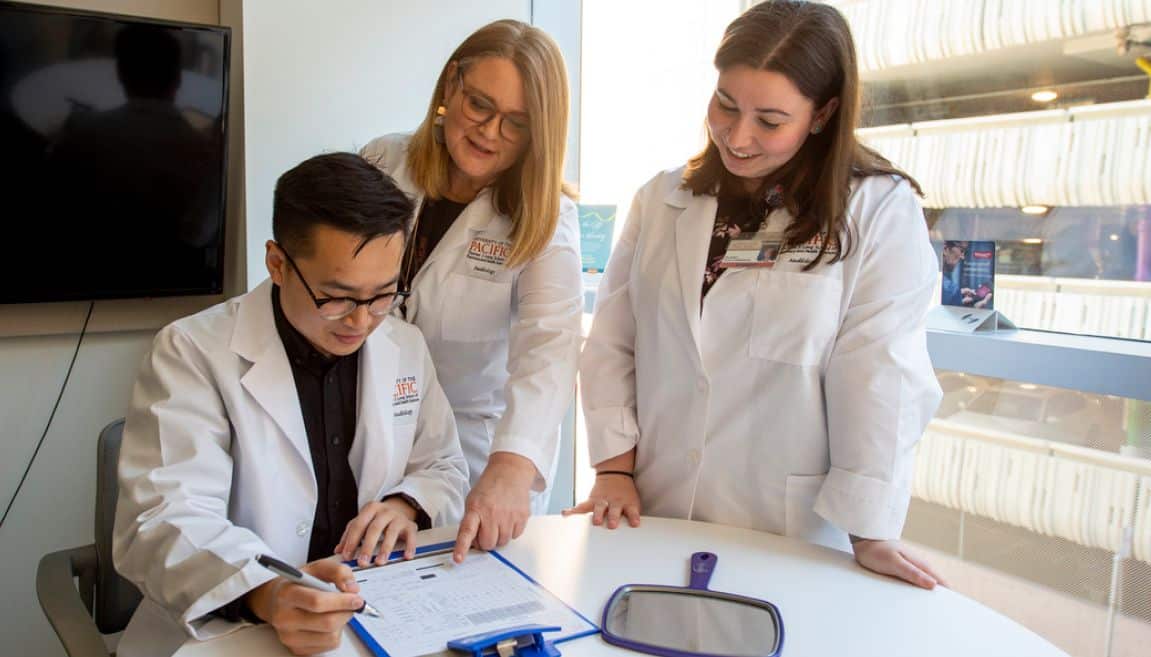What is balance testing?
Balance testing tells our provider what disorder might be causing you to feel unsteady on your feet. Diagnostic testing is an important step in finding the treatment that will best fit your needs.
How does audiometry help diagnose balance disorders?
This exam measures your ability to hear different sounds, pitches and frequencies. In a sound-proof room, you will wear headphones connected to a device that sends sounds to one ear at a time. Our audiologist will ask you to press a button or raise your hand whenever you hear a sound.
Because the ear plays an important role in balance, results from a hearing test can help discover where the balance problem is located. An audiometry test may help our provider gain more information about your balance disorder.
What other tests are used to diagnose balance disorders?
- Acoustic Immittance Measures: These tests evaluate the eardrum and middle ear and are used to determine which part of the ear is affected by hearing loss.
- Auditory Brainstem Response: This test provides information about the electrical activity in the auditory pathway between the inner ear and the brain.
- Electronystagmography: This test measures eye movements to determine how the vestibular system is functioning. Electrodes are placed around the eye to record electrical activity and detect involuntary rapid eye movements.
- Electrocochleography: This test looks at the ratio of fluids in the inner ear.
- Otoacoustic Emissions test: During this procedure, a small probe is inserted into the ear to determine the response of hair cells in the inner ear.
- Videonystagmography: This technique, which detects involuntary eye movements, involves measuring the response of your eyes to moving dots, head and body movements and water or air in the ears.
- Posturography: During this test, you will stand on a platform, and your posture and balance will be measured under various conditions.


When is balance testing done?
Balance testing for vertigo
A common reason for feeling unsteady on your feet is vertigo. This occurs when signals from the vestibular system to the brain about the position of the head in relation to movement are disrupted. It is most often the result of a problem in the middle ear. Balance testing can help determine if you’re experiencing vertigo and is the first step in getting the best treatment for your symptoms.
Balance testing for sports
Balance testing is also important for fitness and sports like tennis and football. It’s valuable for athlete safety, particularly if they may be experiencing a concussion. Useful tests in this category include the Balance Error Scoring System and the Sensory Organization Test.
What should I do if I think I have a balance disorder?
If you’re exhibiting signs of a balance disorder, like dizziness or feeling faint, we can provide diagnosis and treatment for you. Whether your symptoms come and go or are consistent, we’re here to support you.
Call the University of the Pacific in San Francisco at or Stockton at for more information or to schedule an appointment.


